I Continued With The ‘Morty Is Going To Turn Into Rick’ Theme.
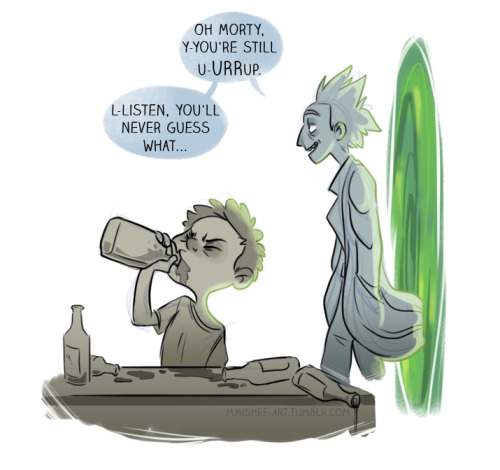
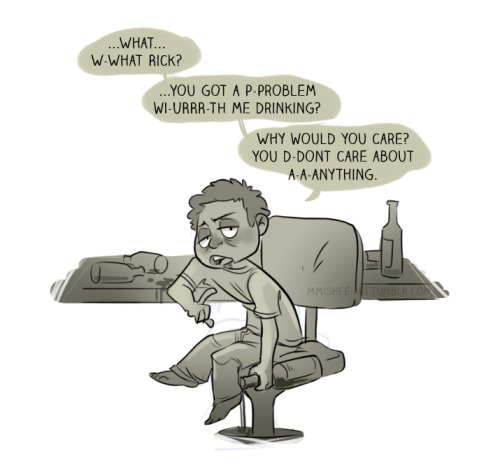
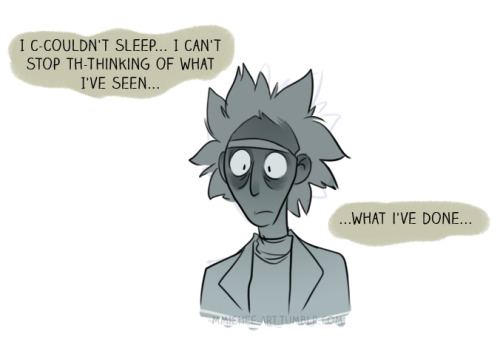
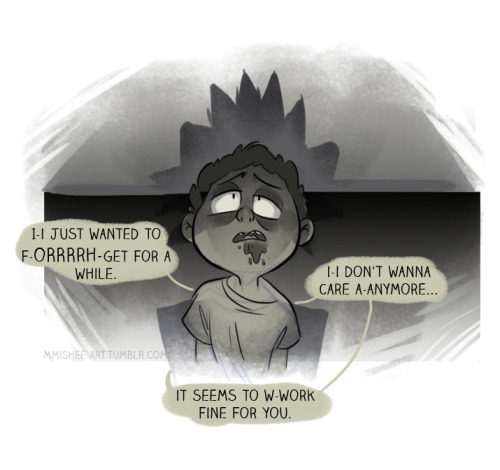
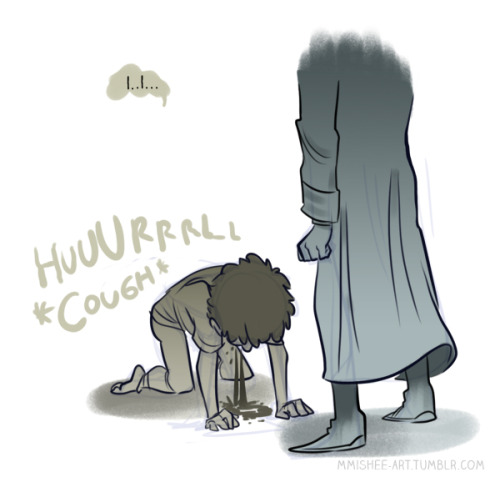

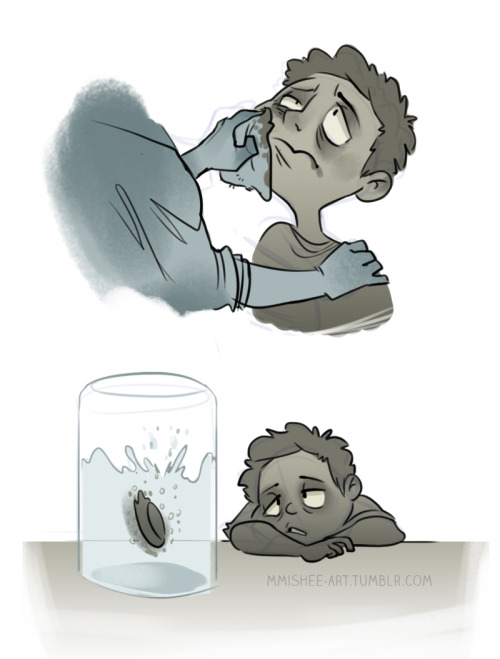

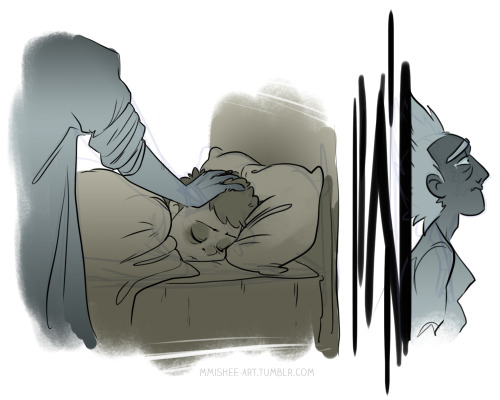

I continued with the ‘Morty is going to turn into Rick’ theme.
Cause I love hurting myself and I’m taking you all with me.
・✿ヾ╲(。◕‿◕。)╱✿・゚
More Posts from Ourvioletdeath and Others
Dear Neil, I think I've made a mistake. The thing is: I sent my manuscript to a small publishing house, that I really like (who have published my short story already). It was fine, they gave me feedback and said after that has been applied, they might like to publish my novel (no confirmation yet!). But it's my first novel ever. I've written/edited like 5-6 years. Maybe I should've let go long ago. The first novel isn't supposed to be published, right? It might have been a bad idea... Thoughts?
Either they will want to publish it, or they won’t. If they do, you didn’t make a mistake. If they don’t, then they’ll tell you, and you’ll be wiser than you were before, and that won’t have been a mistake either.

After the missile struck their moon at an appreciable percentage of the speed of light, scientists manage to translate the message that followed its arrival; “That was a warning. We did not miss. The next one will be wrapped in Cobalt. Do not threaten us.”

What are memories made of? Study sheds light on key protein
Ask a nonscientist what memories are made of and you’ll likely conjure images of childhood birthday parties or wedding days. Charles Hoeffer thinks about proteins.
For five years, the assistant professor of integrative physiology at CU Boulder has been working to better understand a protein called AKT, which is ubiquitous in brain tissue and instrumental in enabling the brain to adapt to new experiences and lay down new memories.
Until now, scientists have known very little about what it does in the brain.
But in a new paper funded by the National Institutes of Health, Hoeffer and his co-authors spell it out for the first time, showing that AKT comes in three distinct varieties residing in different kinds of brain cells and affecting brain health in very distinct ways.
The discovery could lead to new, more targeted treatments for everything from glioblastoma—the brain cancer Sen. John McCain has—to Alzheimer’s disease and schizophrenia.
“AKT is a central protein that has been implicated in a bevy of neurological diseases yet we know amazingly little about it,” Hoeffer said. “Our paper is the first to comprehensively examine what its different forms are doing in the brain and where.”
Discovered in the 1970s and known best as an “oncogene” (one that, when mutated, can promote cancer), AKT has more recently been identified as a key player in promoting “synaptic plasticity,” the brain’s ability to strengthen cellular connections in response to experience.
“Let’s say you see a great white shark and you are scared and your brain wants to form a memory of what’s going on. You have to make new proteins to encode that memory,” he said. AKT is one of the first proteins to come online, a central switch that turns on the memory factory.
But not all AKTs are created equal.
For the study, Hoeffer’s team silenced the three different isoforms, or varieties, of AKT in mice and observed their brain activity.
They made a number of key discoveries:
AKT2 is found exclusively in astroglia, the supportive, star-shaped cells in the brain and spinal cord that are often impacted in brain cancer and brain injury.
“That is a really important finding,” said co-author Josien Levenga, who worked on the project as a postdoctoral researcher at CU Boulder. “If you could develop a drug that targeted only AKT2 without impacting other forms, it might be more effective in treating certain issues with fewer side-effects.”
The researchers also found that AKT1 is ubiquitous in neurons and appears to be the most important form in promoting the strengthening of synapses in response to experience, aka memory formation. (This finding is in line with previous research showing that mutations in AKT1 boost risk of schizophrenia and other brain disorders associated with a flaw in the way a patient perceives or remembers experiences.)
AKT3 appears to play a key role in brain growth, with mice whose AKT3 gene is silenced showing smaller brain size.
“Before this, there was an assumption that they all did basically the same thing in the same cells in the same way. Now we know better,” Hoeffer said.
He notes that pan-AKT inhibitors have already been developed for cancer treatment, but he envisions a day when drugs could be developed to target more specific versions of the protein (AKT1 enhancers for Alzheimer’s and schizophrenia, AKT2 inhibitors for cancer), leaving the others forms untouched, preventing side-effects.
More animal research is underway to determine what happens to behavior when different forms of the protein go awry.
“Isoform specific treatments hold great promise for the design of targeted therapies to treat neurological diseases with much greater efficacy and accuracy than those utilizing a one-size-fits-all approach,” the authors conclude. “This study is an important step in that direction.”

Researchers at King’s College London found that the drug Tideglusib stimulates the stem cells contained in the pulp of teeth so that they generate new dentine – the mineralised material under the enamel.
Teeth already have the capability of regenerating dentine if the pulp inside the tooth becomes exposed through a trauma or infection, but can only naturally make a very thin layer, and not enough to fill the deep cavities caused by tooth decay.
But Tideglusib switches off an enzyme called GSK-3 which prevents dentine from carrying on forming.
Scientists showed it is possible to soak a small biodegradable sponge with the drug and insert it into a cavity, where it triggers the growth of dentine and repairs the damage within six weeks.
The tiny sponges are made out of collagen so they melt away over time, leaving only the repaired tooth.




(via BoringEnormous)


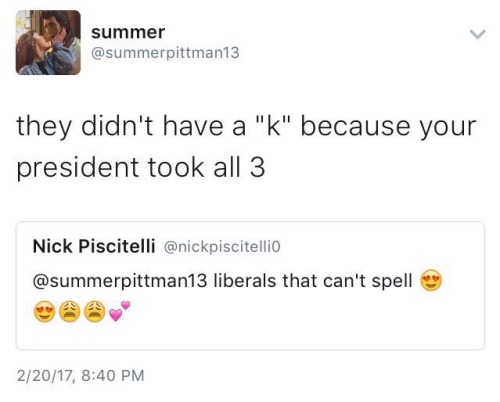

It typically takes coral 25 to 75 years to reach sexual maturity. With a new coral fragmentation method, it takes just 3.
Human Drug Addiction Behaviors Closely Tied to Specific Impairments Within Six Large-Scale Brain Networks
Specific impairments within six large-scale brain networks during drug cue exposure, decision-making, inhibitory control, and social-emotional processing are associated with drug addiction behaviors, according to a systematic review of more than 100 published neuroimaging studies by experts at the Icahn School of Medicine at Mount Sinai and published Wednesday, June 6 in the journal Neuron.
Drug addiction is a disorder that encompasses not only excessive drug-seeking and taking, but also fundamental changes in cognition and emotional processing. It comprises core clinical symptoms and behavioral manifestations including a chronically relapsing cycle of intoxication, bingeing, withdrawal, and craving that propels uncontrollable drug use despite adverse consequences and a reduction in the pleasure derived from the drug. While much of the early research on drug addiction focused on understanding the rewarding properties of the drug, recent research has made it increasingly clear that cognitive and emotional impairments support the initiation, escalation, and maintenance of the cycle of addiction. A better understanding of the underlying impaired neural mechanisms in human drug addiction is critical to paving the way for the development of more targeted, evidence-based treatment interventions and timely prevention approaches.
The Impaired Response Inhibition and Salience Attribution (iRISA) model, first published in 2002 by Rita Goldstein, PhD, Professor of Psychiatry and Neuroscience and Director of the Neuropsychoimaging of Addiction and Related Conditions research program at the Icahn School of Medicine at Mount Sinai, and Nora Volkow, Director of NIDA, proposed that impairments of two broad neuropsychological functions—response inhibition (a cognitive process that permits individuals to inhibit their impulses) and salience attribution (the property of tagging something as valuable or important)—and their underlying neural substrates contribute to the cycle of addiction across a broad range of substances of abuse. The iRISA model uses multiple neuroimaging modalities including magnetic resonance imaging, electroencephalogram (EEG) and derived event-related potentials, positron emission tomography, and neuropsychological testing to explore the underlying neurobiology of human drug addiction and the shift to excessive salience attributed to the drug and drug-related cues at the expense of other salient reinforcers as associated with impaired self-control (especially in a drug related context) and increased drug taking in drug addicted individuals.
“We conducted the current review to update the iRISA model with the most recent evidence from the neuroimaging literature by systematically reviewing 105 task-related neuroimaging studies published since 2010,” says Dr. Goldstein, last and senior author of the paper. “We found consistent impairments in brain function in six large-scale brain networks during performance of different tasks. While the involvement of these specific brain networks was task-specific, we generally observed that in a drug-related context (e.g., during exposure to drug cues) drug addicted individuals had increased engagement of the brain networks underlying decision making, inhibitory control, and social-emotional processing, but a blunted response during non-drug related tasks, as predicted by the iRISA model.”
Specifically, the Mount Sinai study team assessed brain function in drug addiction across a number of brain networks, including findings from whole-brain analyses of significant group differences. They organized the results across six large-scale brain networks that showed impairment of brain function in addiction, encompassing the “reward network,” which includes subcortical and cortical brain regions activated during the appraisal of subjective value; the striatal “habit network,” which underlies learning of automated behavior; the “salience network,” regions involved in (re)directing attentional resources toward salient stimuli; and the “executive network,” which supports the selection of possible behavioral responses (often also named the inhibitory control network).
Two additional networks, which were not discussed in prior reviews of the iRISA model, were found to be relevant to brain function in drug addiction: the “self-directed network,” which is activated during self-directed/referential cognitive processes, and the “memory network,” involved in flexible, multi-cue learning and memory.
“Our review is the first systematic approach to integrate what we know about the function of each of these networks into a comprehensive model underlying drug addiction symptomatology across the addiction cycle,” says Anna Zilverstand, PhD, Assistant Professor of Psychiatry at the Icahn School of Medicine at Mount Sinai and first author of the paper. “We demonstrated common deficits underlying drug addiction independent of the primary drug of choice, which are associated with measures of daily, real-life, drug use and which predict onset, escalation, and relapse into drug use. Our work could inform the development of treatments specifically targeted to alleviate these brain-behavioral deficits.”
Human beings are able to use magic but only through a physical medium, such as a specific type of stone or plant and in some cases even animals. Usable mediums vary from person to person, and most people discover theirs by the time they’re teenagers. You’re now legally an adult but still haven’t found your medium. You’re beginning to think that you can’t use magic at all until a terrible encounter leads you to the horrifying revelation that your medium is human flesh.
-
 solar-flare0 liked this · 2 weeks ago
solar-flare0 liked this · 2 weeks ago -
 teenagedeerangel liked this · 2 weeks ago
teenagedeerangel liked this · 2 weeks ago -
 84honeycrisp liked this · 3 weeks ago
84honeycrisp liked this · 3 weeks ago -
 grasssstastesbad liked this · 4 weeks ago
grasssstastesbad liked this · 4 weeks ago -
 idcanymore555 liked this · 1 month ago
idcanymore555 liked this · 1 month ago -
 ffffff89 liked this · 1 month ago
ffffff89 liked this · 1 month ago -
 genea41 liked this · 1 month ago
genea41 liked this · 1 month ago -
 asterixia liked this · 2 months ago
asterixia liked this · 2 months ago -
 quaita liked this · 2 months ago
quaita liked this · 2 months ago -
 pancakeswithbutter liked this · 2 months ago
pancakeswithbutter liked this · 2 months ago -
 thursdays-lamb reblogged this · 2 months ago
thursdays-lamb reblogged this · 2 months ago -
 dirtyoldsock liked this · 3 months ago
dirtyoldsock liked this · 3 months ago -
 totallyexhausted reblogged this · 3 months ago
totallyexhausted reblogged this · 3 months ago -
 windpipegeraniums liked this · 3 months ago
windpipegeraniums liked this · 3 months ago -
 ask-the-vargonians liked this · 3 months ago
ask-the-vargonians liked this · 3 months ago -
 daengeli liked this · 3 months ago
daengeli liked this · 3 months ago -
 podwriter reblogged this · 3 months ago
podwriter reblogged this · 3 months ago -
 podwriter reblogged this · 3 months ago
podwriter reblogged this · 3 months ago -
 podwriter liked this · 3 months ago
podwriter liked this · 3 months ago -
 zimbizkit reblogged this · 3 months ago
zimbizkit reblogged this · 3 months ago -
 one-sadistic-bitch liked this · 4 months ago
one-sadistic-bitch liked this · 4 months ago -
 celestialcornbread reblogged this · 4 months ago
celestialcornbread reblogged this · 4 months ago -
 discowingdancingqueen liked this · 4 months ago
discowingdancingqueen liked this · 4 months ago -
 jsjakkak liked this · 4 months ago
jsjakkak liked this · 4 months ago -
 somethingborrowed liked this · 5 months ago
somethingborrowed liked this · 5 months ago -
 thatlight-spinner liked this · 5 months ago
thatlight-spinner liked this · 5 months ago -
 pinktidalwavetree liked this · 5 months ago
pinktidalwavetree liked this · 5 months ago -
 burntchickenlookingass liked this · 5 months ago
burntchickenlookingass liked this · 5 months ago -
 lunar-xolotl liked this · 6 months ago
lunar-xolotl liked this · 6 months ago -
 hazelgardener liked this · 6 months ago
hazelgardener liked this · 6 months ago -
 wigglejiggle206 liked this · 6 months ago
wigglejiggle206 liked this · 6 months ago -
 just-some-random-irken liked this · 7 months ago
just-some-random-irken liked this · 7 months ago -
 sillyartisandeer liked this · 7 months ago
sillyartisandeer liked this · 7 months ago -
 dao8 liked this · 7 months ago
dao8 liked this · 7 months ago -
 speed-like-a-wagon liked this · 8 months ago
speed-like-a-wagon liked this · 8 months ago -
 caffeinatedcutie3 liked this · 8 months ago
caffeinatedcutie3 liked this · 8 months ago -
 greenyball reblogged this · 8 months ago
greenyball reblogged this · 8 months ago -
 miles-tails-prowers-crotch reblogged this · 8 months ago
miles-tails-prowers-crotch reblogged this · 8 months ago -
 miles-tails-prowers-crotch liked this · 8 months ago
miles-tails-prowers-crotch liked this · 8 months ago -
 emptyheadgamer reblogged this · 8 months ago
emptyheadgamer reblogged this · 8 months ago -
 goldenfredd1987 liked this · 8 months ago
goldenfredd1987 liked this · 8 months ago -
 sauronandsaki liked this · 8 months ago
sauronandsaki liked this · 8 months ago -
 prickorty reblogged this · 8 months ago
prickorty reblogged this · 8 months ago -
 niezwyklygrzyb liked this · 8 months ago
niezwyklygrzyb liked this · 8 months ago -
 darrengatwood liked this · 9 months ago
darrengatwood liked this · 9 months ago -
 the-music-of-the-sky liked this · 9 months ago
the-music-of-the-sky liked this · 9 months ago -
 niiwa-angel reblogged this · 9 months ago
niiwa-angel reblogged this · 9 months ago